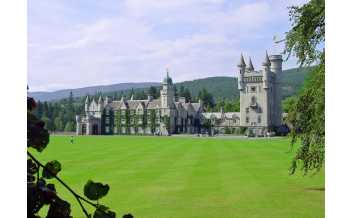“In Scotland, there’s no such thing as bad weather, only the wrong clothes”. Billy Connolly
Britain’s “second kingdom” offers mountains, castles, and quaint towns galore. Although joined to England since the 18th century, Scots have clung to a distinct culture.
If England is the green and pleasant land, Scotland is the wet and rugged realm. Scotland is to England what Texas is to America, and Bavaria to Germany: a place on the edge, fiercely independent, with its own traditions. In Glasgow you’ll find a lively, modern city, contrasting with the historic charm of Edinburgh. To the north you’ll find the Highlands, home to the Queen’s favourite castle, Balmoral, as well as Britain’s highest mountain, Ben Nevis. The whole of Scotland is dotted with stately homes and old castles. These are interspersed with whiskey distilleries, producing the finest drams in the world.
Time it right, and you’ll be here in time for one of Scotland’s many festivals. Burns Night is a must if you’re visiting in January, an evening of music, dance and hearty food. Hogmanay is one of the largest New Year parties in the world. The Edinburgh Festival in summer is a staple of the European arts calendar, attracting big names as well as new talents.
Places to Stay:
Activities
-
Abbotsford House, Melrose, Roxburghshire,...
Home to the renowned novelist and poet Sir Walter Scott, Abbotsford offers an...
-
Ayton Castle, Eyemouth, Scotland
Situated North-West of Berwick-upon-Tweed near the small town of Ayton, Ayton...
-
Balmoral Castle, Balmoral Estates,...
If you’ve ever been lucky enough to come into the possession of a 1987 £100...
-
Blair Castle, Blair Atholl, Pitlochry,...
Just outside the Cairngorms National Park, Blair castle lies within the...
-
Bowhill House, Selkirk, Scottish Borders,...
Home to the Duke and Duchess of Buccleuch, Bowhill House has an extraordinary...
-
Cawdor Castle, Nairnshire, Scotland
Cawdor Castle stands five miles west of the town of Nairn. Built in the late...
-
Dalkeith Country Park, Via The King's...
Tucked away only five miles from Edinburgh, Dalkeith is a perfect retreat...
-
Drumlanrig Castle, Thornhill,...
Drumlanrig Castle in Scotland is a piece of history, a work of art and a...
-
-
Forter Castle, Glenisla, Perthshire, Scotland
Have you ever wanted to live like royalty? Well now at Forter Castle, you...
-
Glamis Castle, Glamis Village, Forfar,...
Glamis Castle, as it stands today, began being built in 1400 and has been the...
-
Manderston, Duns, Berwickshire, Scotland
Manderston House is a grand Edwardian house near Duns, Scotland. The house is...
-
Scone Palace, Scone, Perthshire, Scotland
Scone Palace (confusingly pronounced ‘Scoon’) was named after the medieval...
-
The Lighthouse, Glasgow
The Lighthouse, designed in 1895, is a visitor centre, exhibition space and...
-
Thirlestane Castle, Lauder, Berwickshire,...
Thirlestane Castle is a truly Scottish castle, steeped in history and seen as...
-
Traquair House, Innerleithen,...
Traquair has been lived in for over 900 years, making it the oldest inhabited...





















